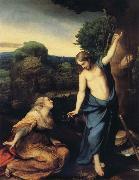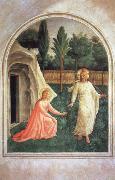Wholesale Oil Painting No Minimum |
|||||||||||
|
|
|||||||||||

|
|||||||||||
|
|
|
||||||||
CorreggioItalian 1489-1534 Correggio Locations Italian painter and draughtsman. Apart from his Venetian contemporaries, he was the most important northern Italian painter of the first half of the 16th century. His best-known works are the illusionistic frescoes in the domes of S Giovanni Evangelista and the cathedral in Parma, where he worked from 1520 to 1530. The combination of technical virtuosity and dramatic excitement in these works ensured their importance for later generations of artists. His altarpieces of the same period are equally original and ally intimacy of feeling with an ecstatic quality that seems to anticipate the Baroque. In his paintings of mythological subjects, especially those executed after his return to Correggio around 1530, he created images whose sensuality and abandon have been seen as foreshadowing the Rococo. Vasari wrote that Correggio was timid and virtuous, that family responsibilities made him miserly and that he died from a fever after walking in the sun. He left no letters and, apart from Vasari account, nothing is known of his character or personality beyond what can be deduced from his works. The story that he owned a manuscript of Bonaventura Berlinghieri Geographia, as well as his use of a latinized form of Allegri (Laetus), and his naming of his son after the humanist Pomponius Laetus, all suggest that he was an educated man by the standards of painters in this period. The intelligence of his paintings supports this claim. Relatively unknown in his lifetime, Correggio was to have an enormous posthumous reputation. He was revered by Federico Barocci and the Carracci, and throughout the 17th and 18th centuries his reputation rivalled that of Raphael. |
||||||||
|
|
||||||||
Noil me tangere
Noil me tangere Painting ID:: 31610 |
mk74
130x103cm
Madrid,
Prado
mk74 130x103cm Madrid, Prado |
|||||||
|
|
||||||||
Fra AngelicoFra Angelico Galleries b.c. 1400, Vicchio, Florence d.Feb. 18, 1455, Rome Fra Angelico (c. 1395 ?C February 18, 1455), born Guido di Pietro, was an Early Italian Renaissance painter, referred to in Vasari's Lives of the Artists as having "a rare and perfect talent". Known in Italy as il Beato Angelico, he was known to his contemporaries as Fra Giovanni da Fiesole (Brother John from Fiesole). In Giorgio Vasari's Lives of the Artists, written prior to 1555, he was already known as Fra Giovanni Angelico (Brother Giovanni the Angelic One). Within his lifetime or shortly thereafter he was also called Il Beato (the Blessed), in reference to his skills in painting religious subjects. In 1982 Pope John Paul II conferred beatification, thereby making this title official. Fiesole is sometimes misinterpreted as being part of his formal name, but it was merely the name of the town where he took his vows, used by contemporaries to separate him from other Fra Giovannis. He is listed in the Roman Martyrology as Beatus Ioannes Faesulanus, cognomento Angelicus??"Blessed Giovanni of Fiesole, nicknamed Angelico". Fra Angelico was working at a time when the style of painting was in a state of change. This process of change had begun a hundred years previous with the works of Giotto and several of his contemporaries, notably Giusto de' Menabuoi, both of whom had created their major works in Padua, although Giotto was trained in Florence by the great Gothic artist, Cimabue, and painted a fresco cycle of St Francis in the Bardi Chapel in Santa Croce. Giotto had many enthusiastic followers, who imitated his style in fresco, some of them, notably the Lorenzetti, achieving great success. |
||||||||
|
|
||||||||
|
|
Noil me tangere
Noil me tangere Painting ID:: 55938 |
1440-41,fresco,70.875x57.5 in,180x146 cm,museo di san marco dell'angelico,florence,ltaly 1440-41,fresco,70.875x57.5 in,180x146 cm,museo di san marco dell'angelico,florence,ltaly |
||||||
|
|
||||||||
|
Fra Angelico Fra Angelico Galleries b.c. 1400, Vicchio, Florence d.Feb. 18, 1455, Rome Fra Angelico (c. 1395 ?C February 18, 1455), born Guido di Pietro, was an Early Italian Renaissance painter, referred to in Vasari's Lives of the Artists as having "a rare and perfect talent". Known in Italy as il Beato Angelico, he was known to his contemporaries as Fra Giovanni da Fiesole (Brother John from Fiesole). In Giorgio Vasari's Lives of the Artists, written prior to 1555, he was already known as Fra Giovanni Angelico (Brother Giovanni the Angelic One). Within his lifetime or shortly thereafter he was also called Il Beato (the Blessed), in reference to his skills in painting religious subjects. In 1982 Pope John Paul II conferred beatification, thereby making this title official. Fiesole is sometimes misinterpreted as being part of his formal name, but it was merely the name of the town where he took his vows, used by contemporaries to separate him from other Fra Giovannis. He is listed in the Roman Martyrology as Beatus Ioannes Faesulanus, cognomento Angelicus??"Blessed Giovanni of Fiesole, nicknamed Angelico". Fra Angelico was working at a time when the style of painting was in a state of change. This process of change had begun a hundred years previous with the works of Giotto and several of his contemporaries, notably Giusto de' Menabuoi, both of whom had created their major works in Padua, although Giotto was trained in Florence by the great Gothic artist, Cimabue, and painted a fresco cycle of St Francis in the Bardi Chapel in Santa Croce. Giotto had many enthusiastic followers, who imitated his style in fresco, some of them, notably the Lorenzetti, achieving great success. Noil me tangere 1440-41,fresco,70.875x57.5 in,180x146 cm,museo di san marco dell'angelico,florence,ltaly |
||||||||
|
|
||||||||
|
Prev Next
|
||||||||
|
|
||||||||
|
Related Paintings to Fra Angelico :. |
||||||||
|
|
||||||||
|
CONTACT US |


